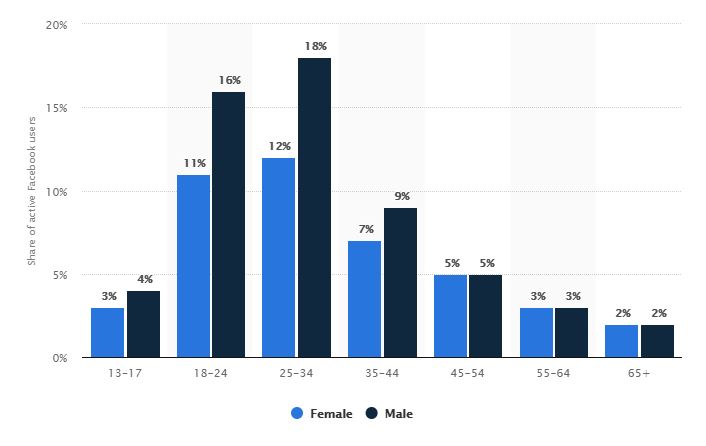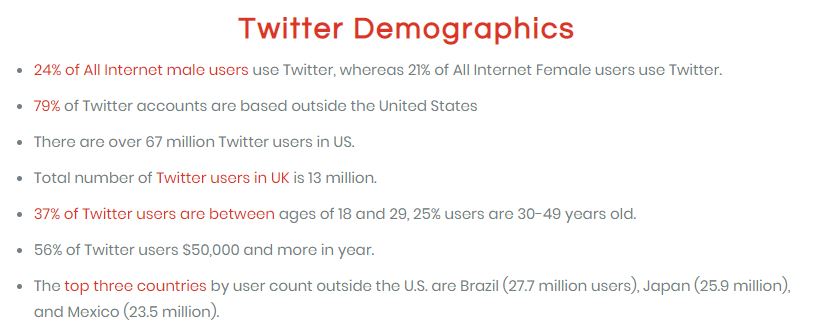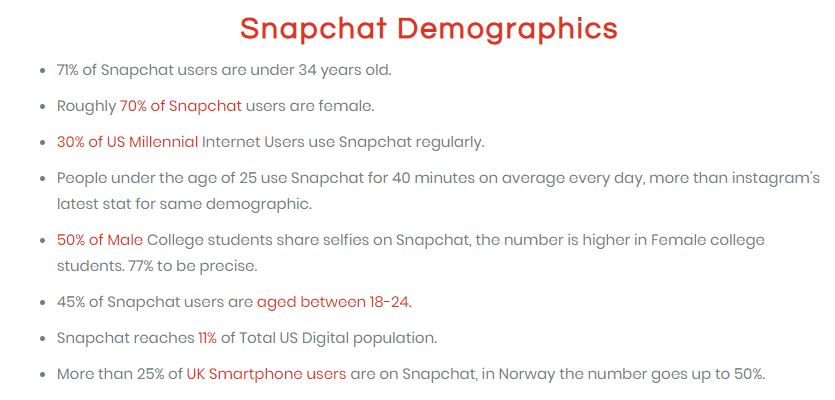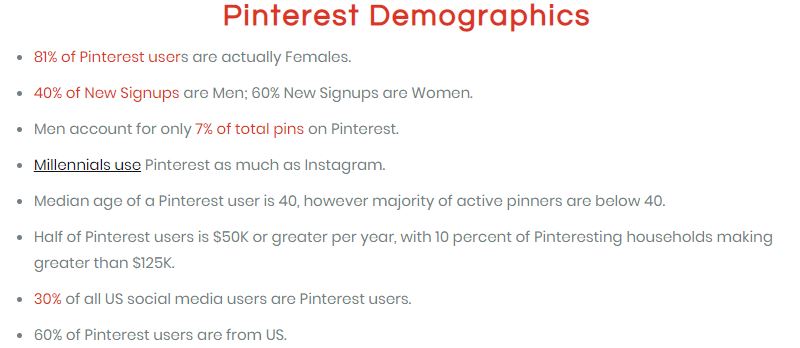media update’s Christine Gerber provides a simple three-step guide on how to choose the best social media platforms for your business.
Before you can build your following on social media, you need to know which platforms will be best suited to your business – and which ones will speak to the correct audience.
Here’s a three-step guide on choosing the
right social media platforms:
1. Research each platform’s audience
Each platform has a distinctive demographic, and it’s important to select the correct one in terms of where to post, or else you’re just wasting your resources. This will require a bit of research, so get your keyboard ready – or just read below:
Facebook
Facebook is fairly business-friendly when it comes to posting your content on the platform, so this is a good place to start. With 1.47 billion daily active users, you’re bound to reach your target audience.
You might be wondering if Facebook’s demographics match up to your audience description. Well, let’s have a look:
 Image courtesy of Statistica
According to these Statistica figures
Image courtesy of Statistica
According to these Statistica figures, a majority of the daily active users on the platform are male, and between the ages of 25 and 34, followed by the majority of female users in the same age group. It’s up to you to decide where your audience aligns with these demographics – and how to reach them.
Another way to ensure you reach your target demographic on Facebook is to boost your posts – this will ensure that your posts are seen in more people’s News Feeds.
This option is for businesses who have a spare social media budget and who are willing to spend the extra cash for more views.
TwitterTwitter is great for businesses that produce a large number of marketing campaigns, as the platform is shrouded in ‘hashtags’ and ‘@’ mentions.
The hashtags allow you to get creative with your campaign as you can produce an audience-specific hashtag that will attract your consumer.
Not only that, but the hashtags are also searchable, meaning if you provide a particular service, let’s say a new pet sitting business, you could search ‘#PetSitting’ and – voila! There’s your audience.
It’s still important to check out the audience demographics, so have a look below:
 Image sourced from Omnicore
LinkedIn
Image sourced from Omnicore
LinkedInIf your business is career-orientated, or one that follows a B2B model, then you’ll definitely want to post on LinkedIn.
Let’s see who will be looking at your posts:
 Image sourced from Omnicore
Instagram
Image sourced from Omnicore
InstagramIf you’re a business that produces a lot of high-quality images, then this is the platform for you! Instagram allows you to visually show consumers whatever you’re selling, with the added option of searchable hashtags – similar to those on Twitter.
The platform’s demographics do differ, however. Have a look:
 Image sourced from Statistica
Image sourced from Statistica
Snapchat
Snapchat, like Instagram, is ideal if your business is visual-based and you like sharing images and videos (i.e., you produce magazines or you’re a photographer) and if you’re targeting a younger audience.
Let’s see who Snapchat's audience is:
 Image sourced from Omnicore
Pinterest
Image sourced from Omnicore
PinterestIf your business is a lifestyle brand that caters particularly to females, then Pinterest is definitely a social platform to consider.
Find this platform’s demographics below:
 Image sourced from Omnicore
Image sourced from Omnicore
2. Decide on the type of content to post
Now that you know who to target, you need to decide what type of content you’d like them to see. Is your business going to be image-orientated? Will it produce videos? What about polls?
It’s important to align your content with what your business produces. For example, if you’re running a Wildlife magazine publication, you’ll be more likely to reach audiences on Instagram and Snapchat, than those on LinkedIn and Twitter.
This is because magazines are image-oriented, meaning you’ll have more of an impact posting your special edition cover on Instagram than you would on LinkedIn.
3. Keep an eye on where your competitors are posting – and post there
A good place to learn your strategy is from your competitors. Observe them. Are their posts paid for? How often do they post? Which posts do audiences engage the most with?
In keeping your friends close, and your enemies closer, you’ll learn a lot from just watching
where your competitors post – and
what they’re posting.
This way, you can see who they target, what content they use and how often they post it. If your competitor targets a certain demographic you’ve been meaning to try out and – just by watching them – you learn that it’s not a success, you’ll know better who to avoid.
You’ll also be able to see what type of social marketing strategy they use for their more successful posts and incorporate it into your own.